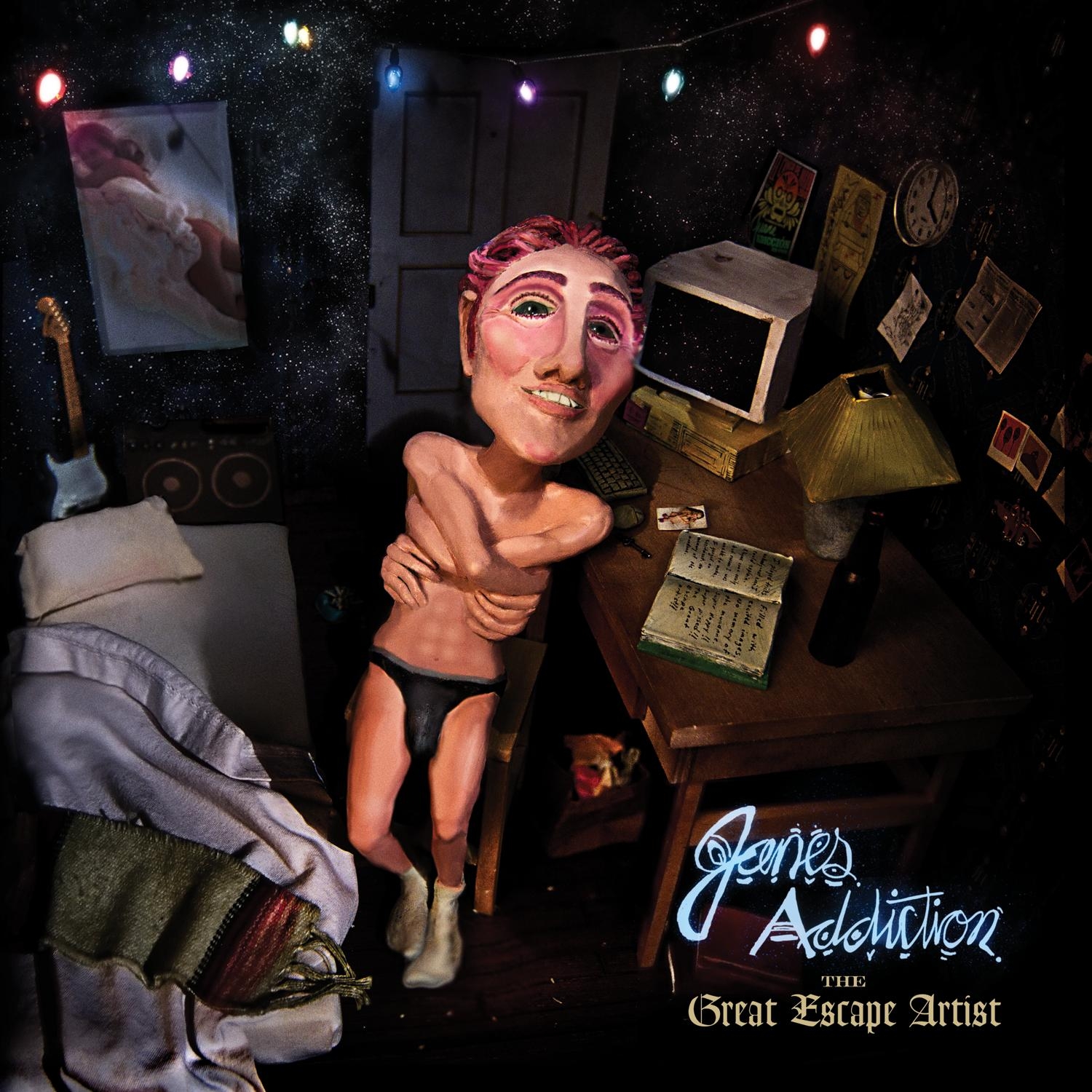
Album Review: Jane's Addiction - "The Great Escape Artist"
This is Jane’s Addiction. Or is it? Truly, it depends on what the name “Jane’s Addiction” means. If the name is synonymous with west-coast style funk influenced near-psychedelic alternative rock and roll, then “The Great Escape Artist” is not Jane’s Addiction. Contrarily, if the name “Jane’s Addiction” is less about the serialized sound of a band and more about a cadre of musicians constantly looking to experiment and broaden their aural horizons, then “The Great Escape Artist” is perfectly adept at carrying the umbrage of the title “Jane’s Addiction.”
The entire album can be judged solely within those disparate terms, especially considering the panoply of gray shades that those ideas invoke. “The Great Escape Artist,” is best viewed as a Venn diagram where the circles represent “things you knew about Jane’s Addiction,” and “things you have yet to learn about Jane’s Addiction,” with the band themselves labeled in the overlap.
Eric Avery’s absence must be addressed, as much as he and the band would probably prefer it not be. Without Avery’s jaunty, slapping, near-ska bass playing, “The Great Escape Artist” takes on an idiom very different from in previous efforts. Gone are the full-throat stomping rhythms that made the classic cuts on “Nothing’s Shocking” stand out.
However, that debut (and most famous) album was released more than twenty-three years ago, and while that album represents the largest piece of Jane’s Addiction’s legacy, it hardly tells the entire story. Perhaps what makes “The Great Escape Artist” a Jane’s Addiction album at final tally is that no two of their now four albums have ever mirrored each other, and this effort is no different.
Throughout his career, Perry Farrell has always tried to keep on the pulse of the newest musical trends, in particular when organizing Lollapalooza (and that’s not a new trend; he booked Bodycount with Nine Inch Nails and Siouxsie and the Banshees in 1991, and Ice Cube amidst Ministry and Soundgarden in 1992.) As such, Perry took up the idea that the sound from 1988 simply wasn’t going to work anymore. This no doubt led to both the thematic shift and the incorporation of more electronic elements, which Farrell had been toying with himself for years. To top that off, Farrell’s vocals are more controlled on this effort, using some healthy restraint to avoid overwhelming the sound as he’s capable of.
Cutting to the chase, “The Great Escape Artist” works, and for a number of reasons. First and foremost, Dave Navarro gave a huge clue as to the album’s unified composition back when he was interviewed for this site. “I would say that musically Stephen and I both took fresh new approaches to our own instruments first and foremost. It was important to me as a guitar player to not repeat myself as much as possible. I also personally spent more time with keyboards and writing keyboard lines where in the past I might have tried to emulate those lines on guitar. My intention was to broaden the depth of the music and introduce a new space that I hadn’t experimented with before.”
What Navarro was saying was that he and drummer Stephen Perkins were both already on board with the band’s new direction. To produce such a unique shift in a band’s musical arsenal requires each member to accept the project's paradigm. The fact that “The Great Escape Artist” contains very little, if any, of Navarro’s classically righteous riffing took both trust and humility for someone with such a high Q rating.
Without that unity of purpose, an enjoyably different song like “Twisted Tales” would have fallen apart. The cut features a baseline rhythm construction nearly out of a Hoobastank album (there’s a name you haven’t thought about in a while, I’m sure,) but develops with a modern alternative chorus that is both catchy and effecting. All of this is done with a rather demure line from Navarro, built to fit rather than to crown, and with electronics subtly filling in the gaps. From end to end, Navarro’s role seems to be to highlight rather than overpower.
It is this same faith in the product from Farrell, Navarro and Perkins (it’s tough to include Sitek and Chaney because of their fluid roles at the time,) that makes well-crafted album starters “Underground” and “End to the Lies” work so well. These are both bombastic songs that live moment to moment, and are best enjoyed as examples of the classic Jane’s Addiction explosiveness rendered in a new era.
.jpg)
One of the other departures from what fans would consider typical Jane’s Addiction fare is the removal of the traditional crescendo chorus. Whereas songs like single “Irresistible Force” or “I’ll Hit You Back” feel like they should break out, they prefer to build and recede more like a wave, washing back and forth sublimely between parts. Even Perkins' snare rolls seem to serve as segues as opposed to harbingers.
“I would say that when I heard the final mix of “Splash A Little Water” I was absolutely blown away primarily because structurally that song ran a risk of being a ‘lighters in the air’ kind of song and now it’s a ‘lighter app in the air’ kind of song.” That's what Navarro said about a cut on the back half of “The Great Escape Artist,” and he’s right. It would have been easy for the cut to fall into the pit of disposable lighter songs, but there’s just enough curious distortion, coupled with Farrell’s off-kilter singing cadence to keep that from happening. Paired with the song’s surprising bass depth and electronic precision, “Splash a Little Water” is testament to the band’s creativity and skill.
The downside to the album is that in trying to embrace the sound of alternative and electronically influenced in 2011, the band produces some songs that get swallowed up. “Curiosity Kills” and “Broken People” are songs that stray too far from the Jane’s Addiction source material and lose individuality when compared to the rest of the album. They’re not poorly constructed; they just have no strong identity or features, and that makes them disposable. Just like for Satellite Party or Porno for Pyros, Farrell shows that he has no fear of failure when experimenting. Just like for Satellite Party or Porno for Pyros, it doesn’t always work out like he hoped.
Closing out the album is the punk-influenced, almost Dead Kennedys-ian “Words Right Out of My Mouth,” which is both the album’s heaviest rocker and a quiet reminder that Jane’s can still bring it hard rock style, as though it were still 1990.
“I think one of the things... that makes the band so compelling is the fact that all three of us have different distinct and strong personalities...and when we get into a collective situation those distinct personalities can give birth to new and fresh ideas that none of us would have thought of without the others.” Those were Navarro’s words, and they ring true here. “The Great Escape Artist” is certainly unique, certainly fresh. Furthermore, not one of the three of them could have made it work without the other two. Each man’s effort dovetails nicely into the collective whole, making the album greater than the sum of its parts. There’s a maturity on display here that speaks to the bands’ ability to write what’s appropriate, not necessarily what is most technically impressive or complex.
In closing, “The Great Escape Artist” is worth a spin whether you’re a long time Jane’s Addiction fan or not. Old fans will find the new sound refreshing and old dissidents might find something they didn’t expect.
.jpg)

